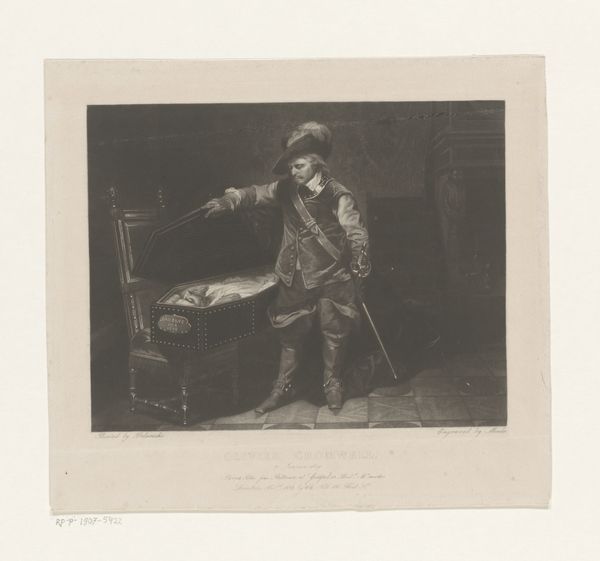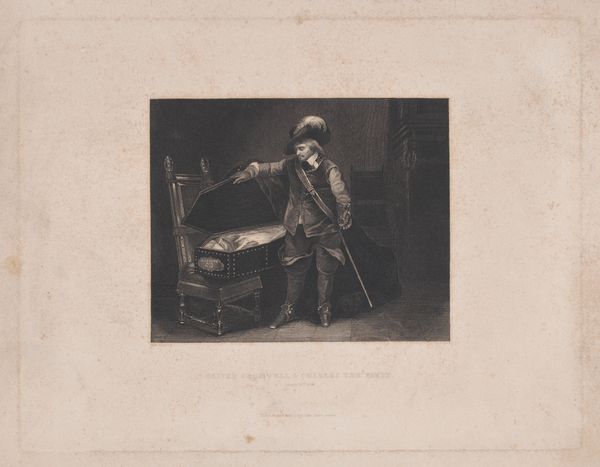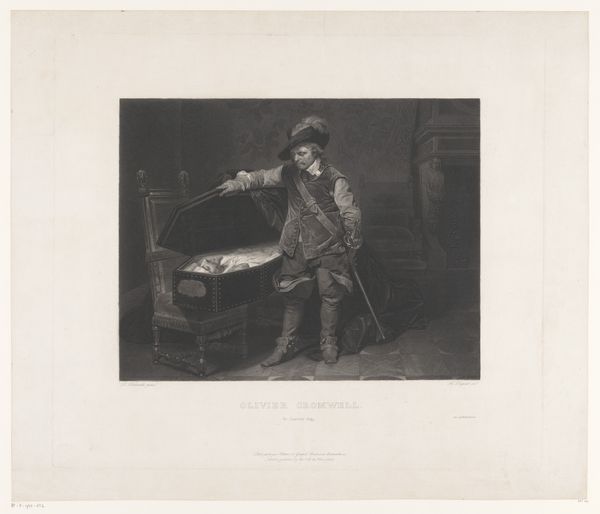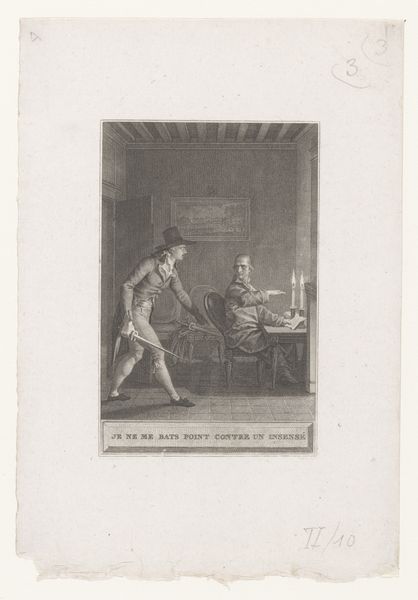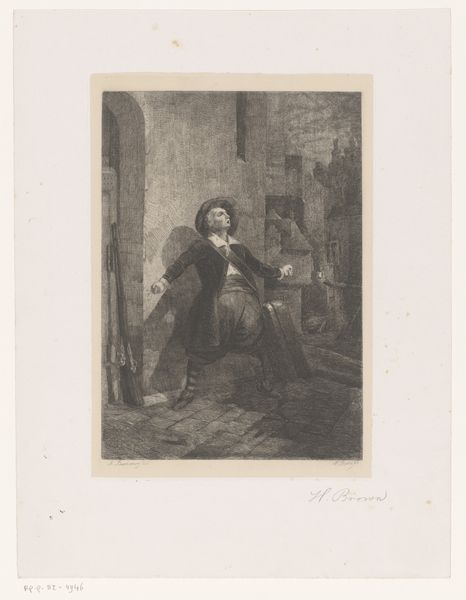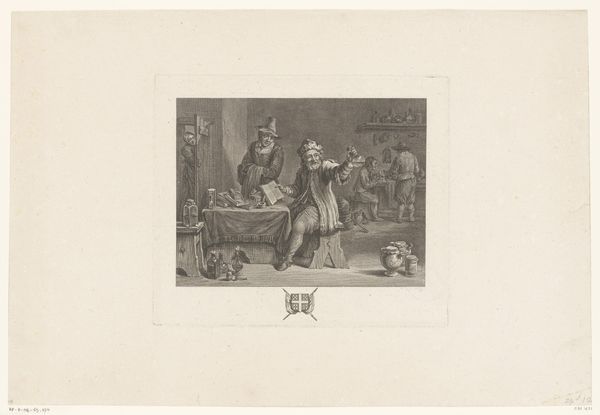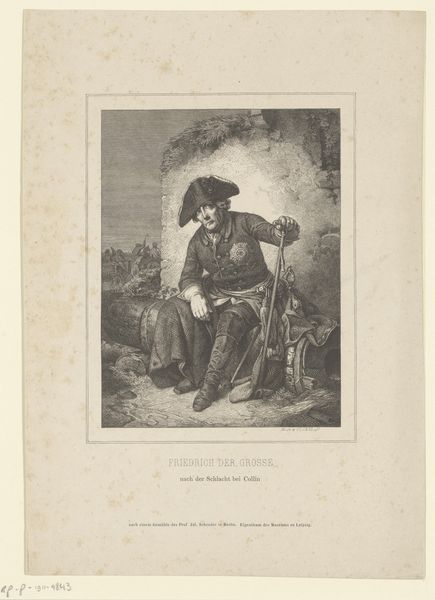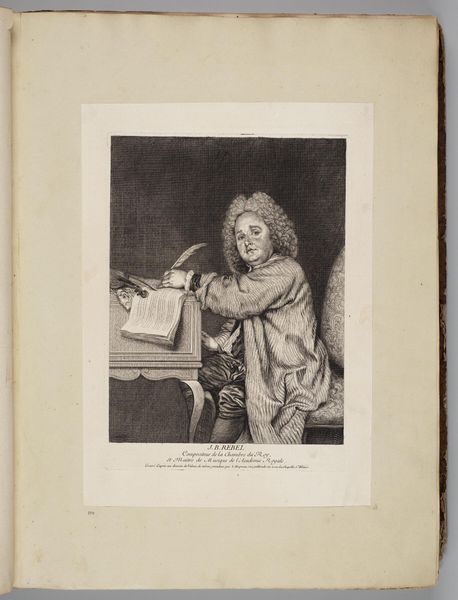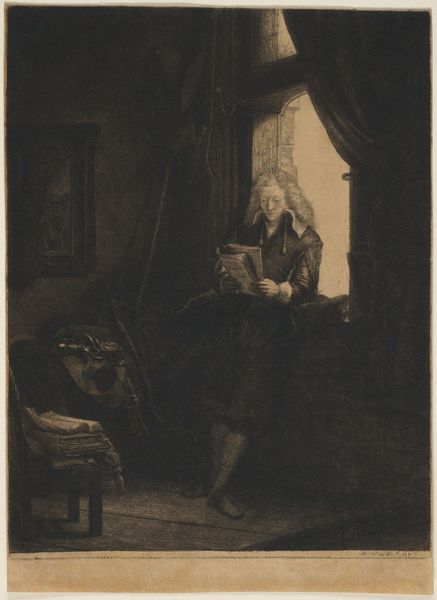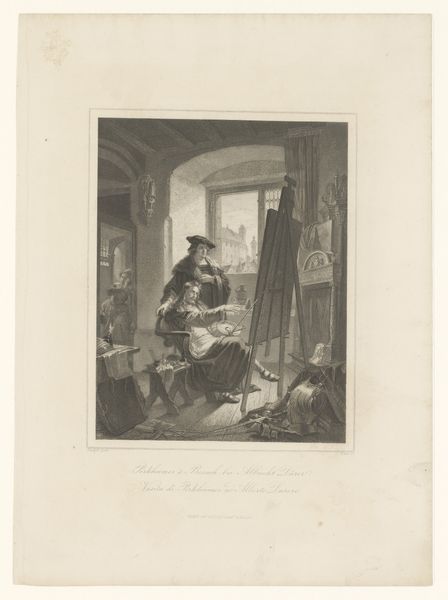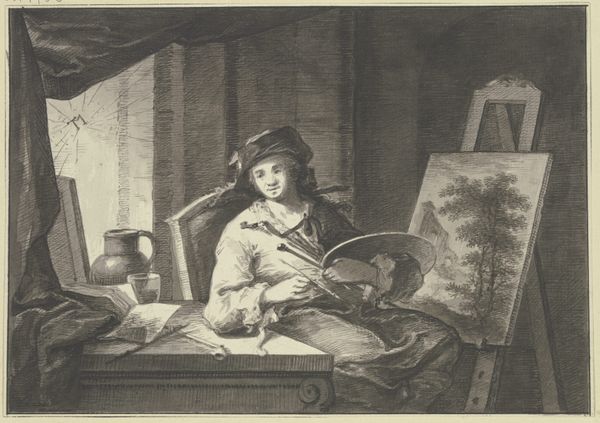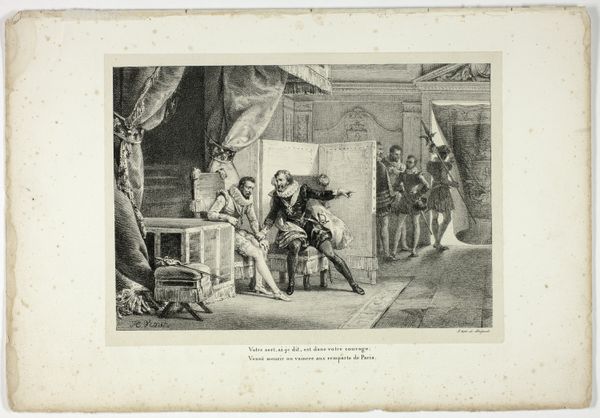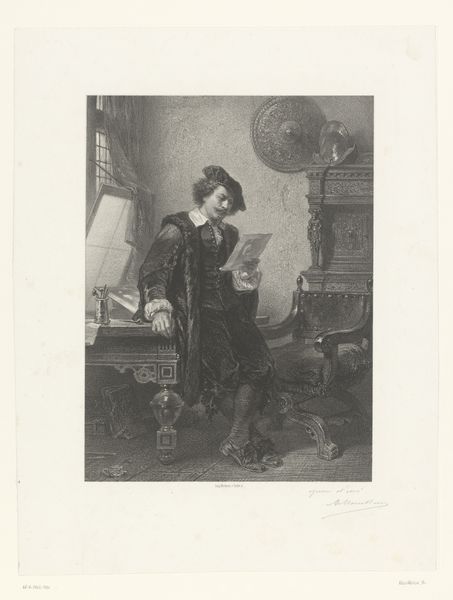
Copyright: CC0 1.0
Curator: What a dramatic pose. The figure dominates the pictorial space, and the stark contrast between the light falling on his face and the darkness surrounding the coffin really draws the eye. Editor: Indeed. This is Louis Pierre Henriquel-Dupont's rendering of Oliver Cromwell. The piece invites a look at 19th-century printmaking practices and the prevailing attitudes toward historical figures. Curator: The composition certainly heightens the tension. What story do you think the artist is trying to tell? Editor: Perhaps one about power and mortality? Looking at the labor involved, the craft itself elevates the subject, lending Cromwell a sense of importance and grandeur, whether deserved or not. Curator: I see what you mean. The act of creating this image, of putting Cromwell on display, is in itself a form of historical narrative, shaped by the artist's hand and the materials available. Editor: And from a purely formal perspective, the stark blacks and whites emphasize the gravity of the moment, while the single source of light directs our gaze with precision. It’s quite effective. Curator: A powerful example of how art can both reflect and shape our understanding of history. Editor: Absolutely, and it serves as a good reminder of the aesthetic choices underlying every work.
Comments
No comments
Be the first to comment and join the conversation on the ultimate creative platform.
